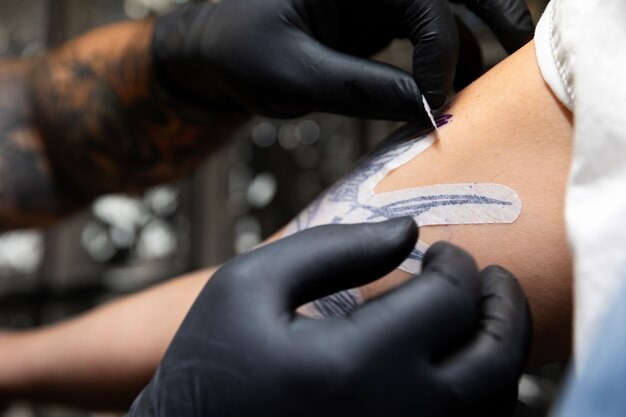The Art of Erasing: Understanding the Factors That Influence Successful Tattoo Removal

For many, tattoos represent cherished memories, artistic expression, or significant life experiences. However, as tastes and life paths evolve, some individuals may choose to remove their tattoos. While laser removal remains the most common method, it’s not the only option, and success hinges on understanding several crucial factors beyond just the removal technique. So, before embarking on the tattoo removal journey, let’s delve into the key elements that influence its outcome.
Beyond Lasers: Alternative Removal Methods
While laser removal reigns supreme, alternative methods exist, each with its own advantages and limitations:
- Dermabrasion: This mechanically removes the skin’s top layers, including the tattoo pigment. However, it’s an invasive procedure with potential scarring and uneven pigment removal.
- Surgical excision: This involves cutting out the tattooed skin and stitching the wound closed. It’s suitable for small tattoos but leaves scars and may distort surrounding skin.
- Salabrasion: This uses a saline solution to abrade the skin and remove pigment. It’s less invasive than dermabrasion but often requires multiple sessions and may not be effective for all colors.
- Chemical peels: These peels use acids to remove skin layers containing tattoo pigment. However, they can be unpredictable and cause scarring or discoloration.
Choosing the right method depends on several factors, including:
- Tattoo size, color, and depth: Different methods work better for specific colors and depths.
- Skin type and tone: Individuals with darker skin tones may be more prone to scarring with certain methods.
- Desired outcome and budget: Lasers offer more precise removal but are typically more expensive.
- Pain tolerance: Some methods, like dermabrasion, can be more painful than others.
Consulting a board-certified dermatologist experienced in tattoo removal is crucial to assess your individual suitability for each method and determine the best approach.
Factors Influencing Tattoo Removal Success
Even with the most appropriate removal method, several factors influence the outcome:
- Age of the tattoo: Older tattoos often respond better to removal than fresh ones.
- Ink quality and composition: Professional-grade inks tend to be easier to remove than homemade or lower-quality ones.
- Body location: Tattoos on areas with less sun exposure and more movement (like arms and legs) fade better than those on sun-exposed or immobile areas (like hands and feet).
- Overall health and healing: Underlying health conditions or poor healing ability can impact removal results.
- Post-removal care: Following proper aftercare instructions significantly reduces infection risk and optimizes healing, leading to better outcomes.
Remember, complete removal isn’t always guaranteed, and some fading or ghosting may remain. Realistic expectations and open communication with your dermatologist are key to a successful tattoo removal experience.
Beyond the Physical: The Emotional Journey of Erasing Ink
Deciding to remove a tattoo (tattoovanishmethod.com/tattoo-vanish-best-tattoo-removal-method) is often a deeply personal decision with emotional undercurrents. It’s essential to acknowledge and address these emotions throughout the process. Some common feelings include:
- Regret or guilt: These emotions may stem from changing life circumstances or evolving personal views.
- Loss or grief: For some, tattoos represent significant memories or connections, and their removal can feel like saying goodbye.
- Anxiety or fear: Concerns about pain, scarring, or the unknown outcome can cause anxiety.
Openly discussing these emotions with a trusted friend, therapist, or support group can be immensely helpful. Remember, you’re not alone in this journey, and support can make a significant difference.
Conclusion: Informed Choices for a Successful Tattoo Removal Experience
Removing a tattoo is a personal decision with various factors to consider. By understanding the available methods, their limitations, and the influencing factors, you can make informed choices that optimize your chances of a successful outcome. Remember, the journey extends beyond the physical; acknowledging and addressing the emotional aspects is crucial for a positive experience. With careful planning, realistic expectations, and open communication with your dermatologist, you can navigate the path of tattoo removal with confidence and achieve the results you desire.


Leave a Reply